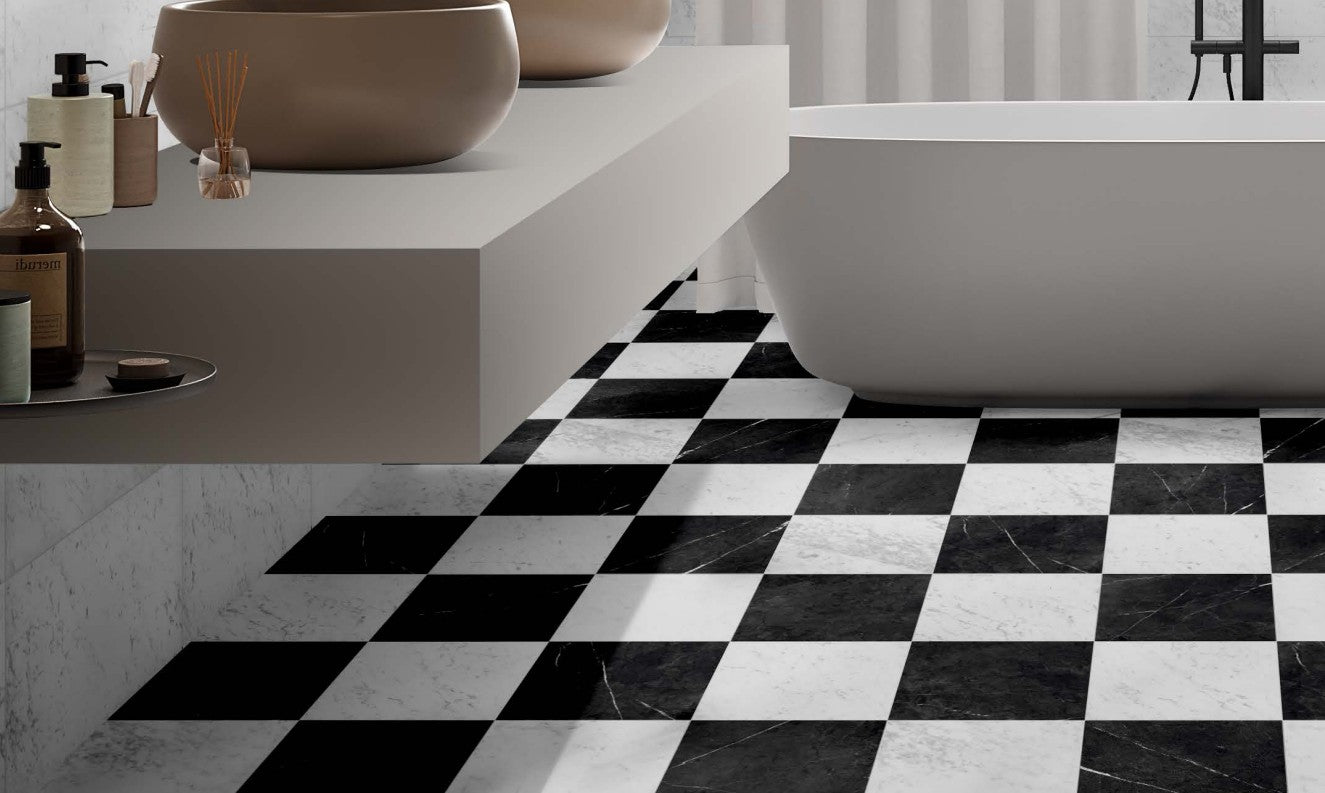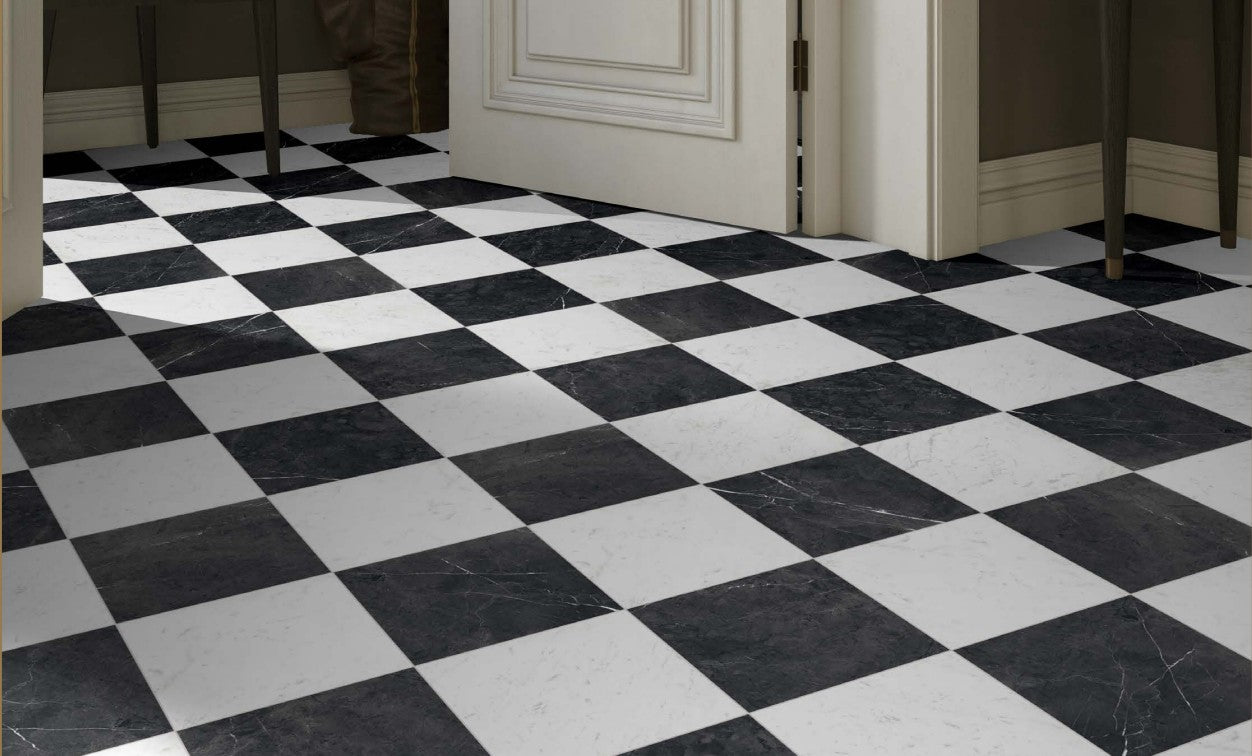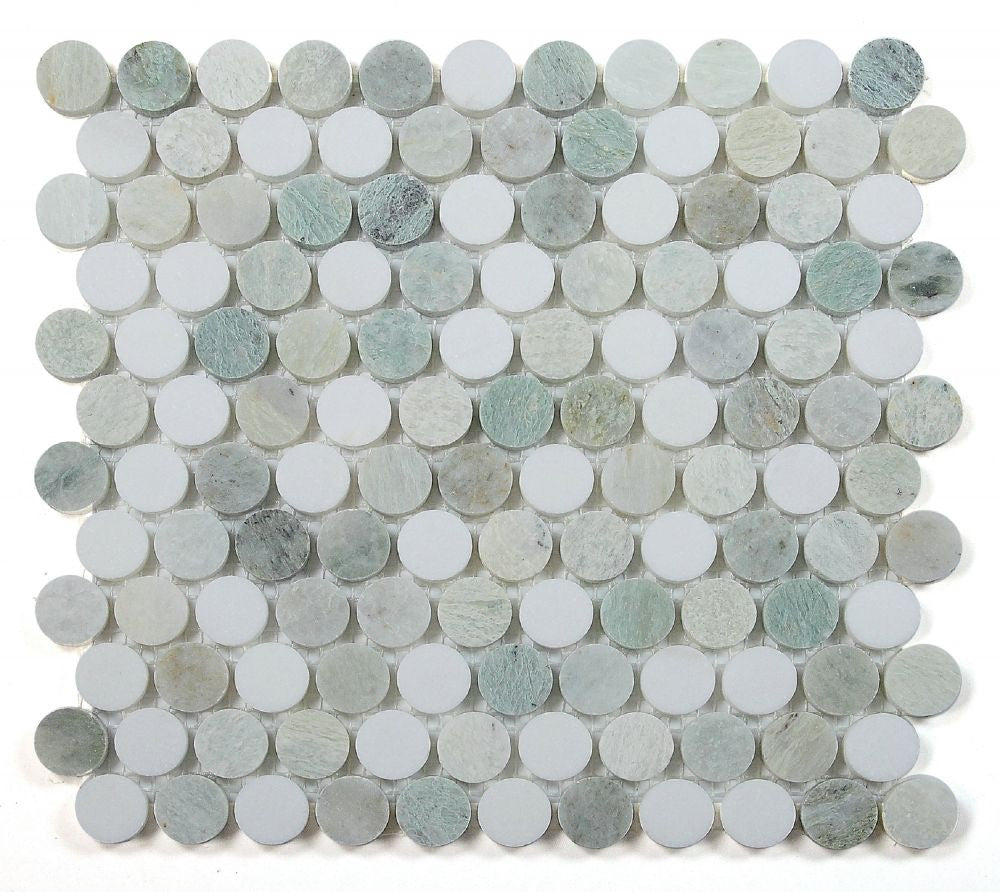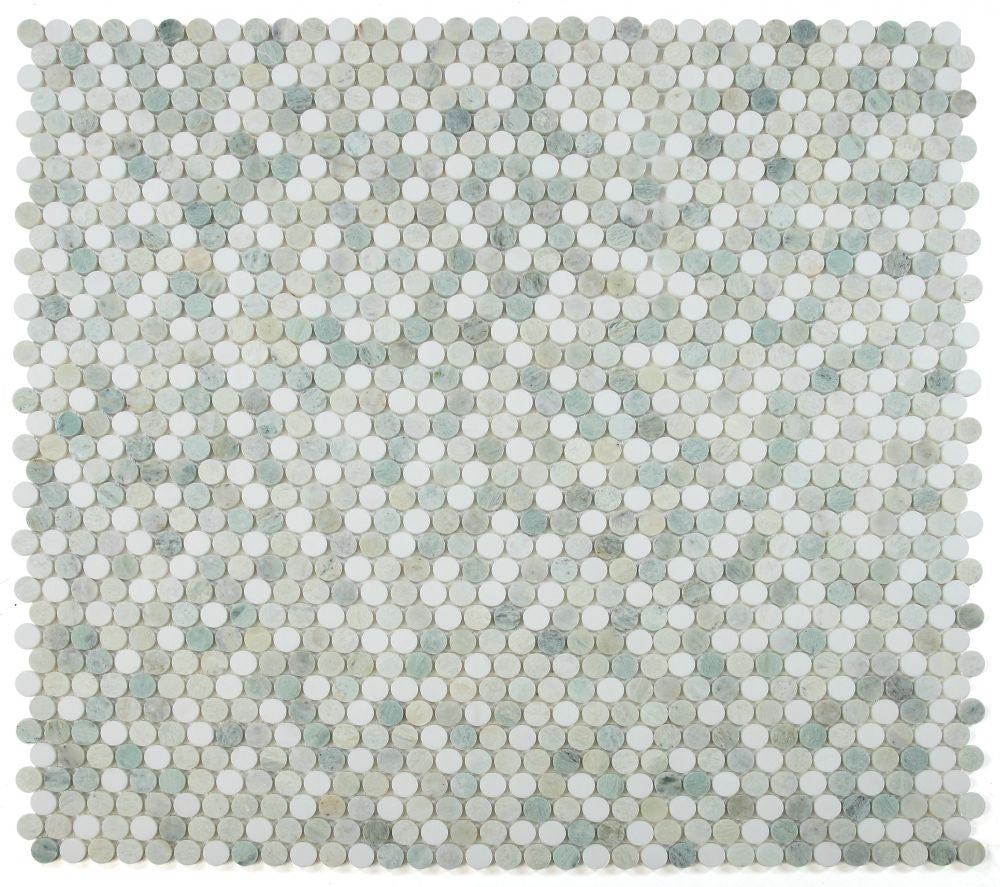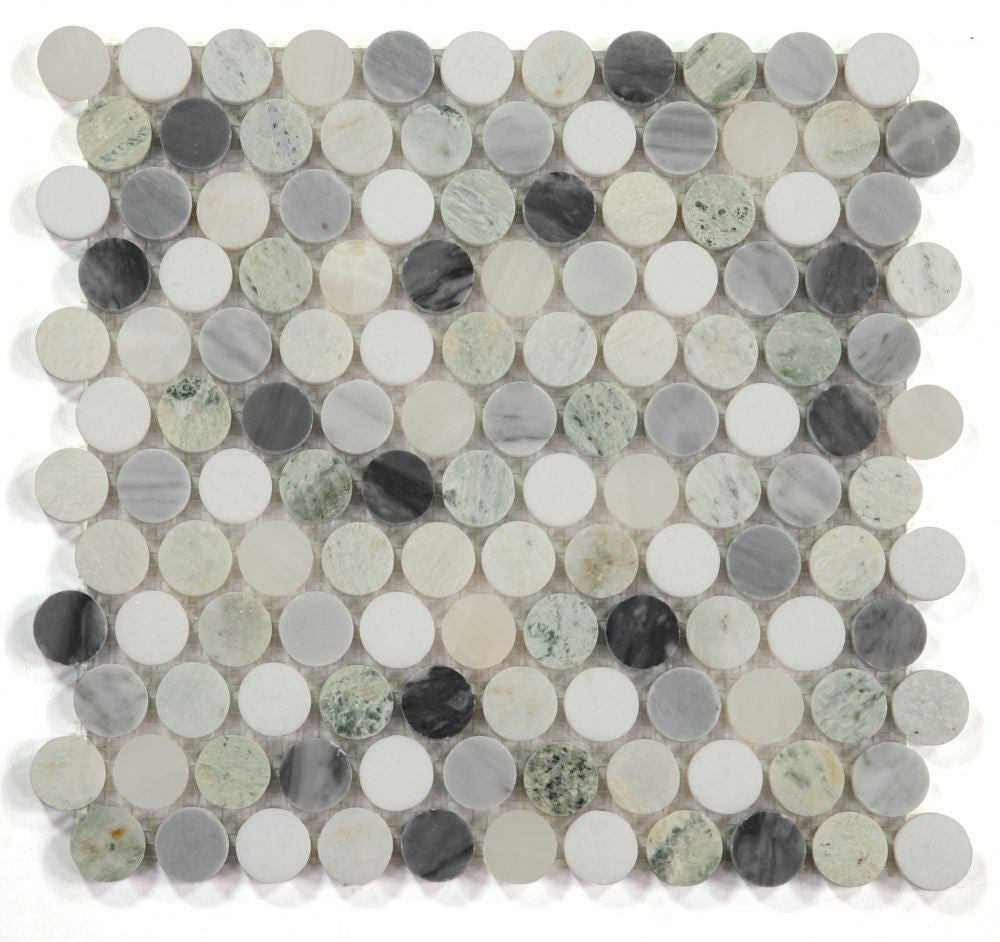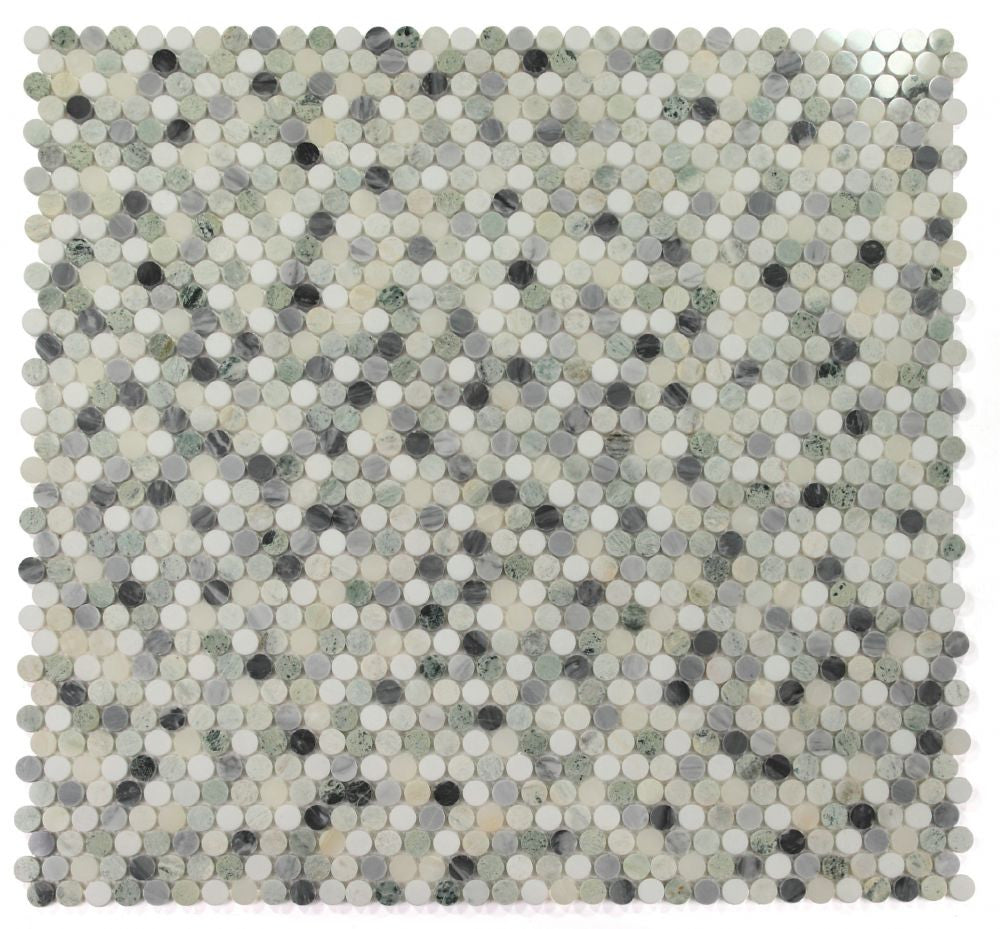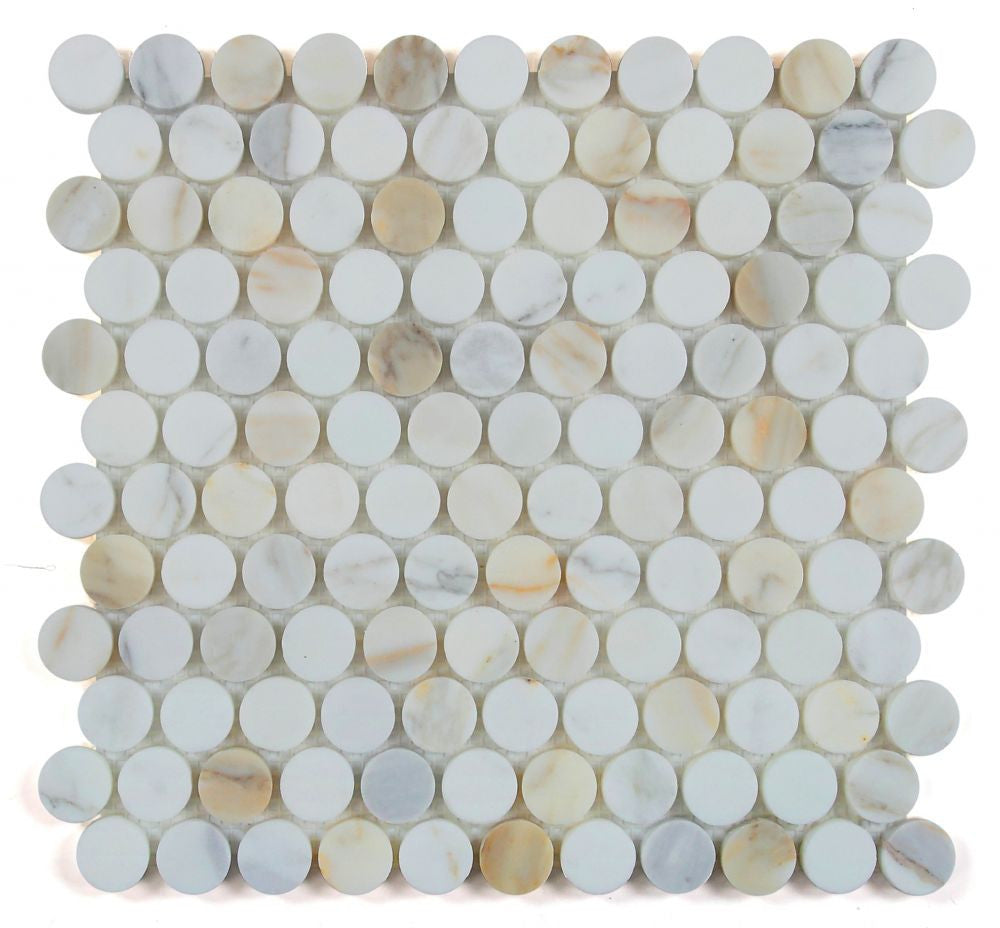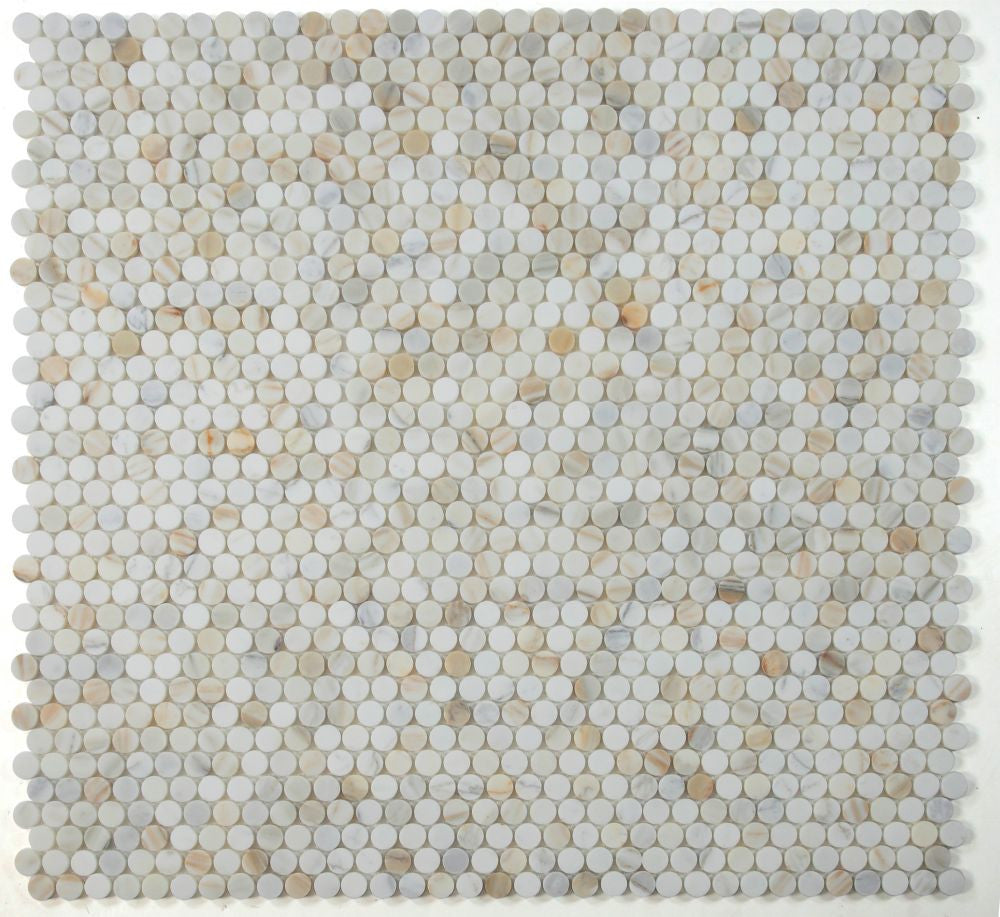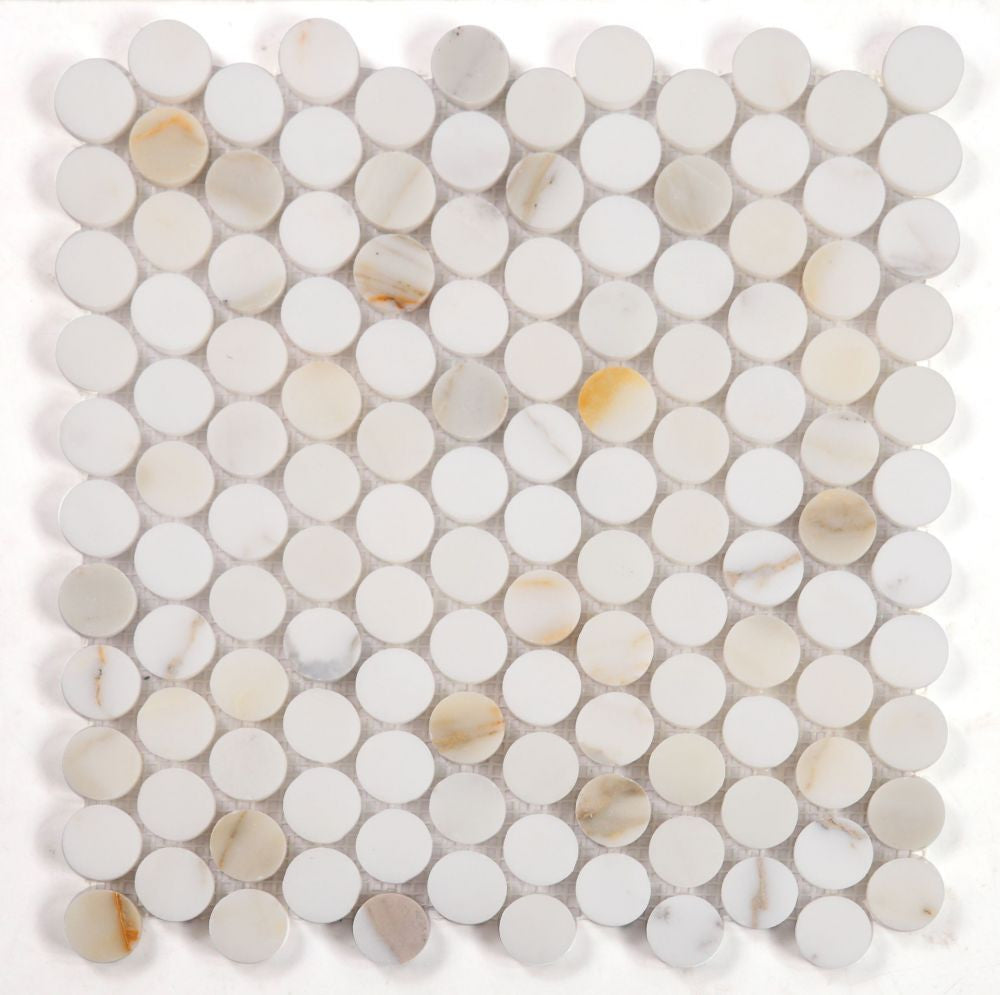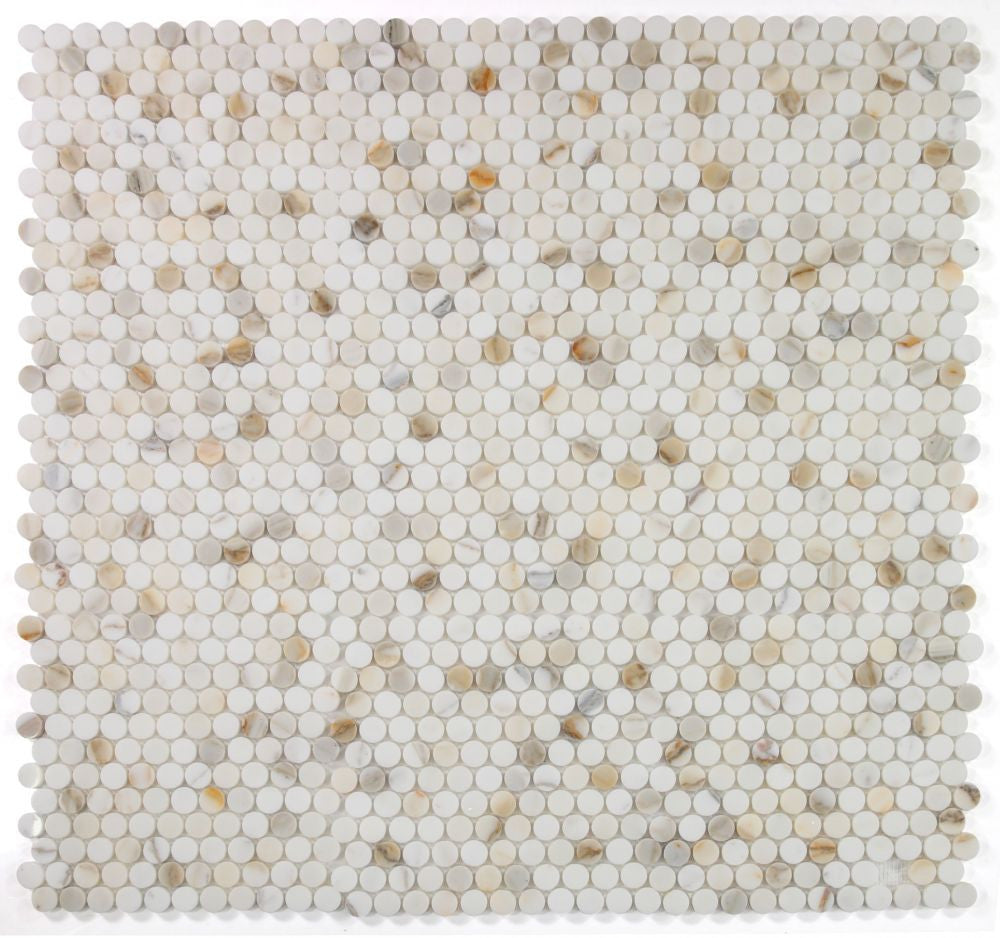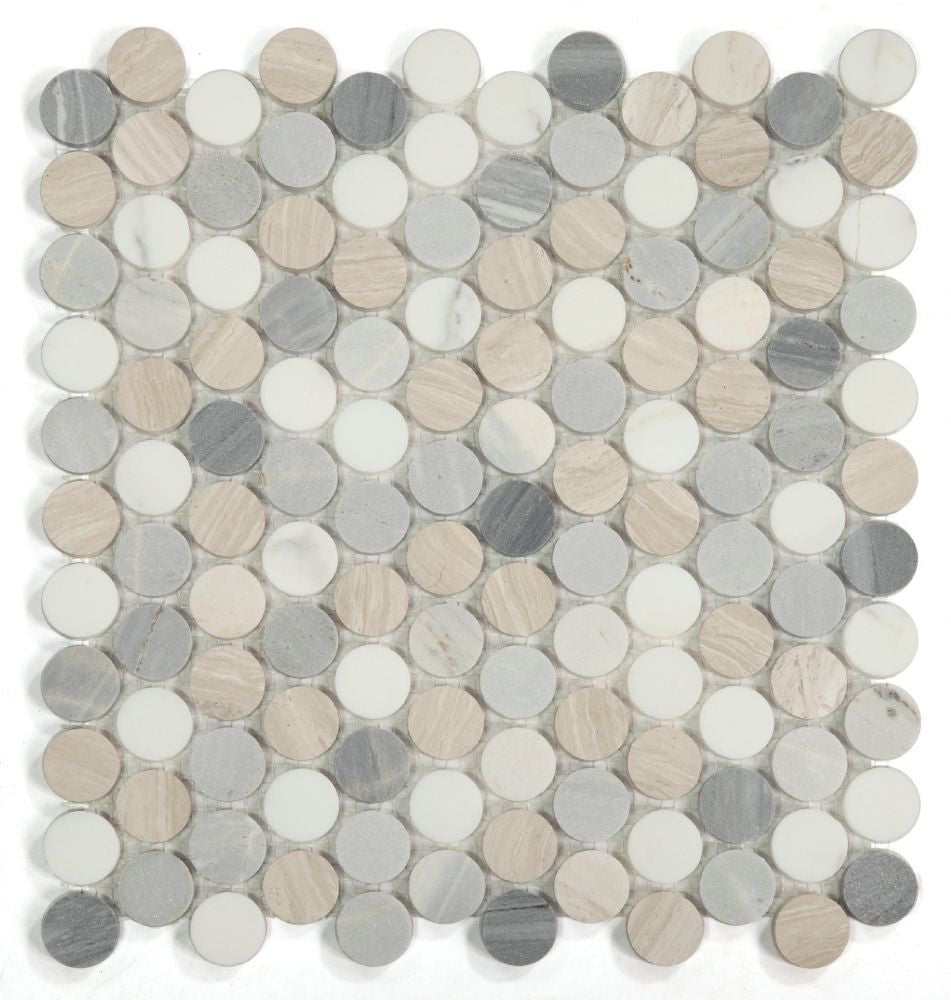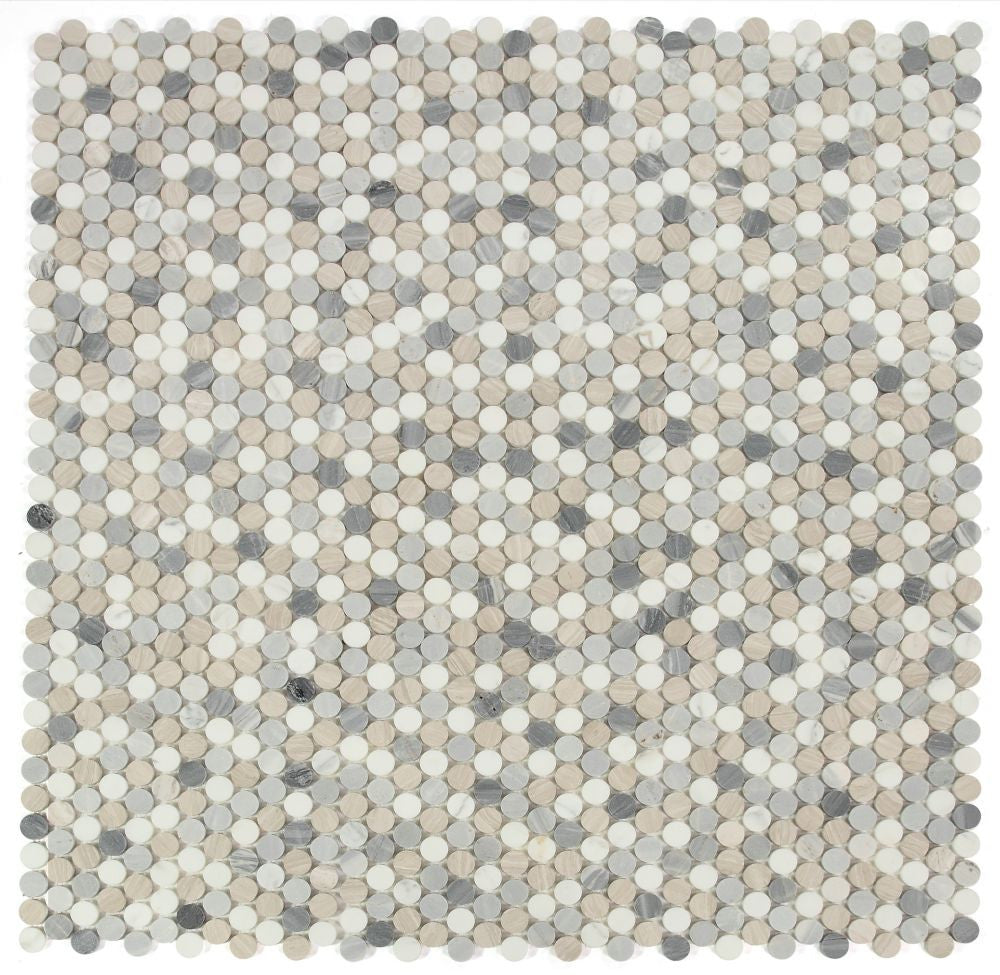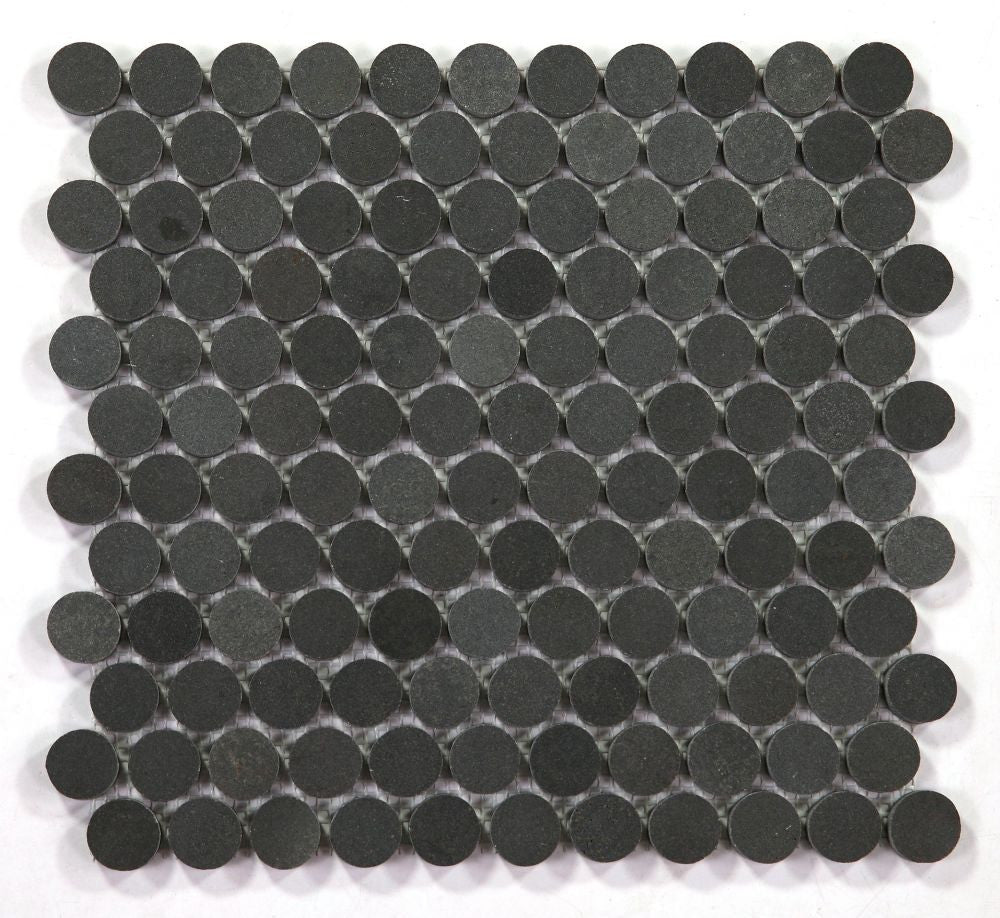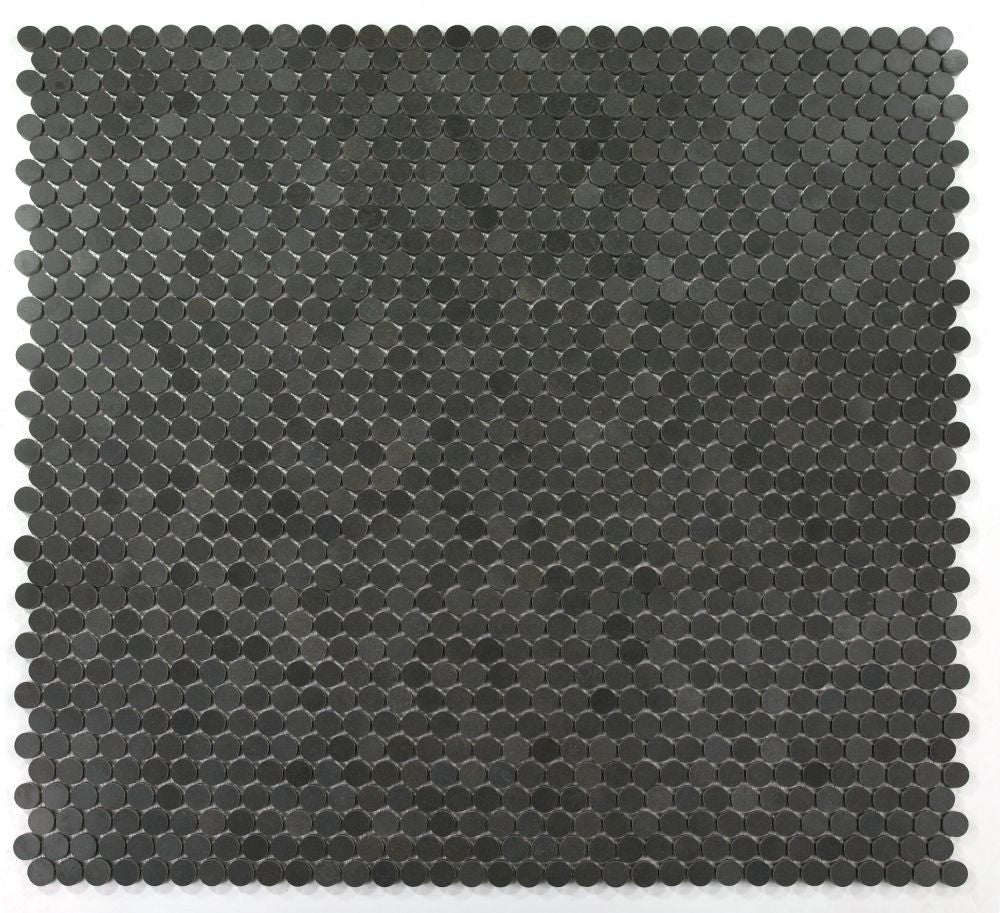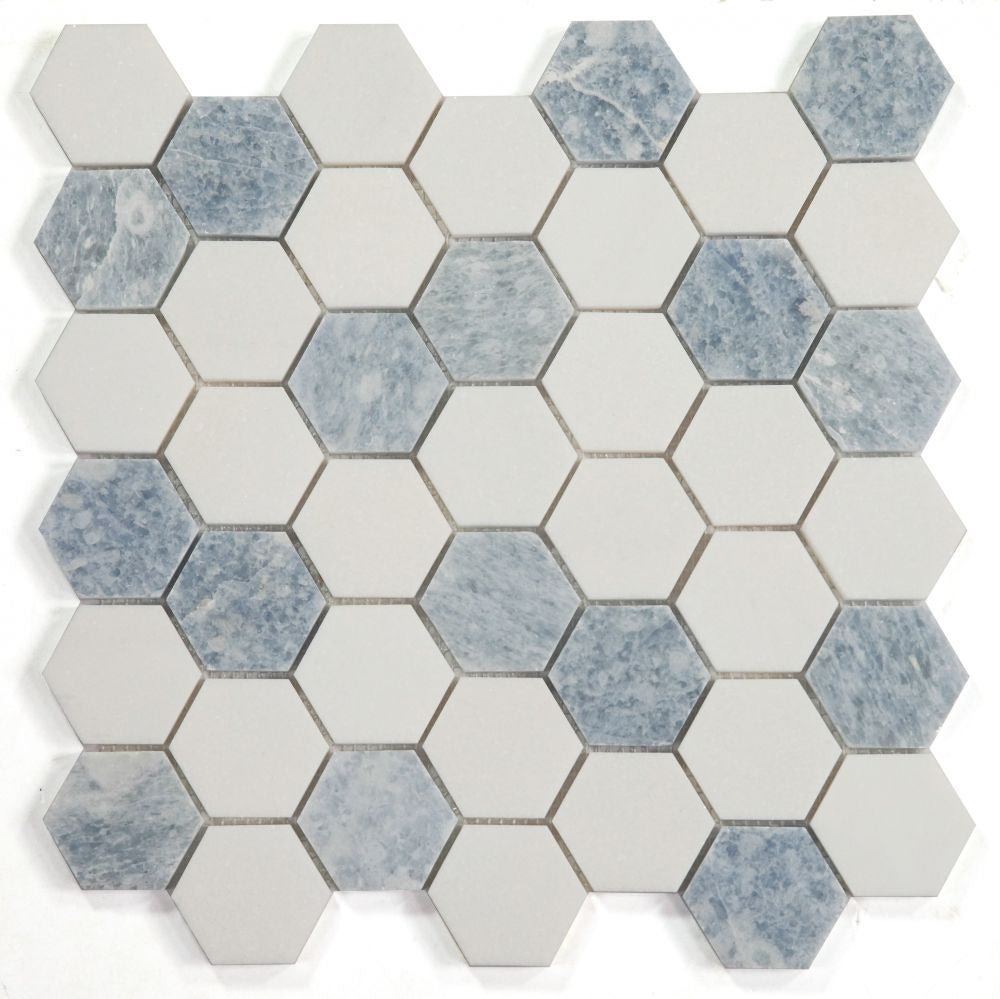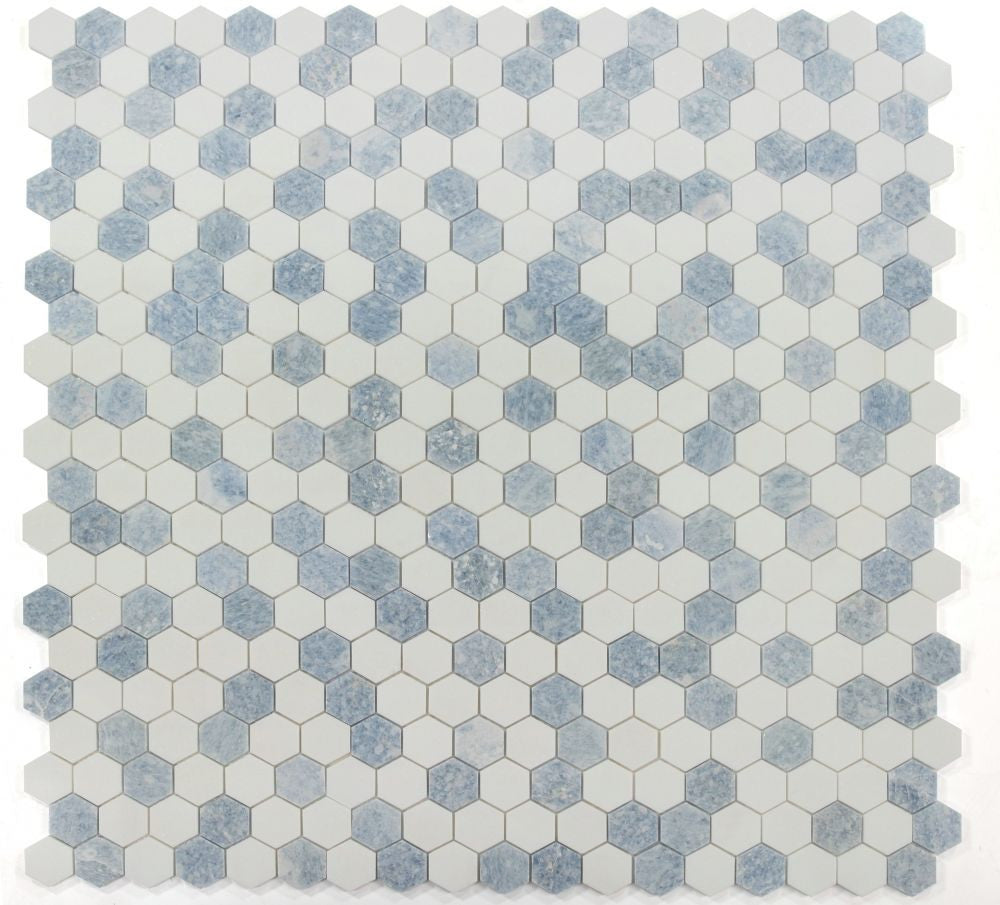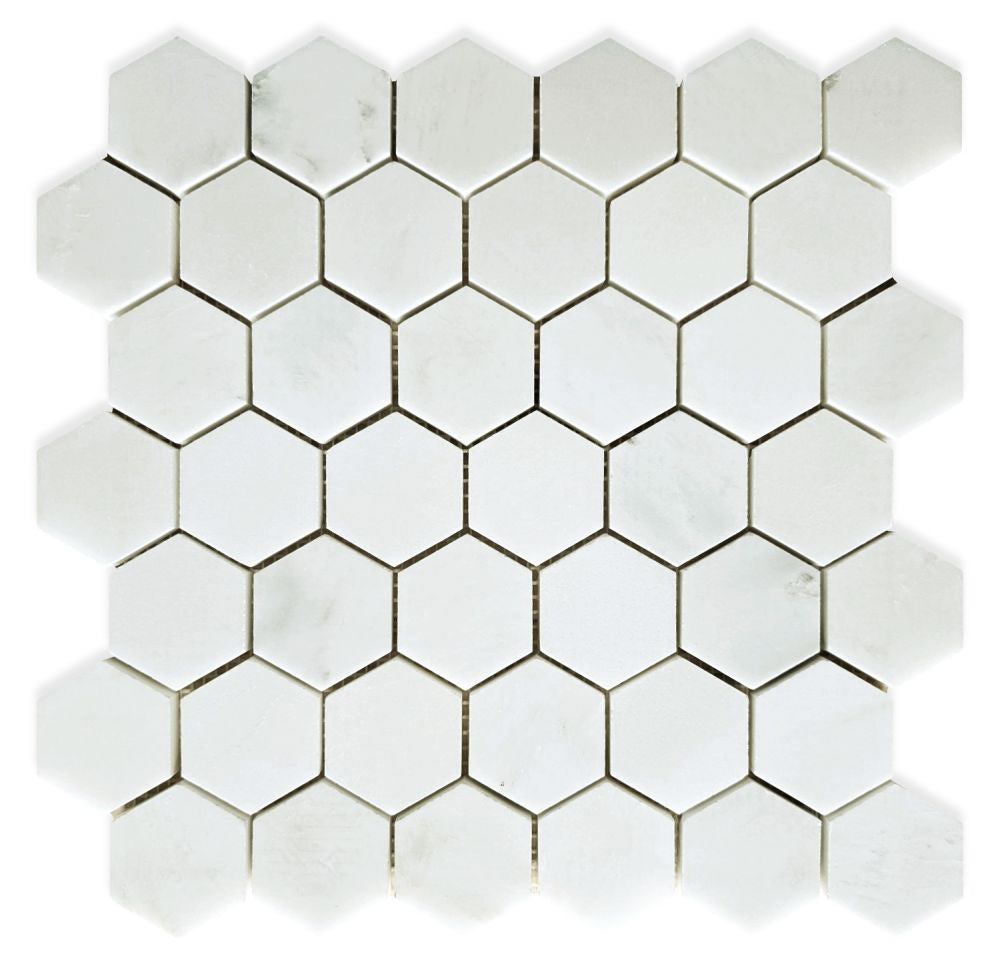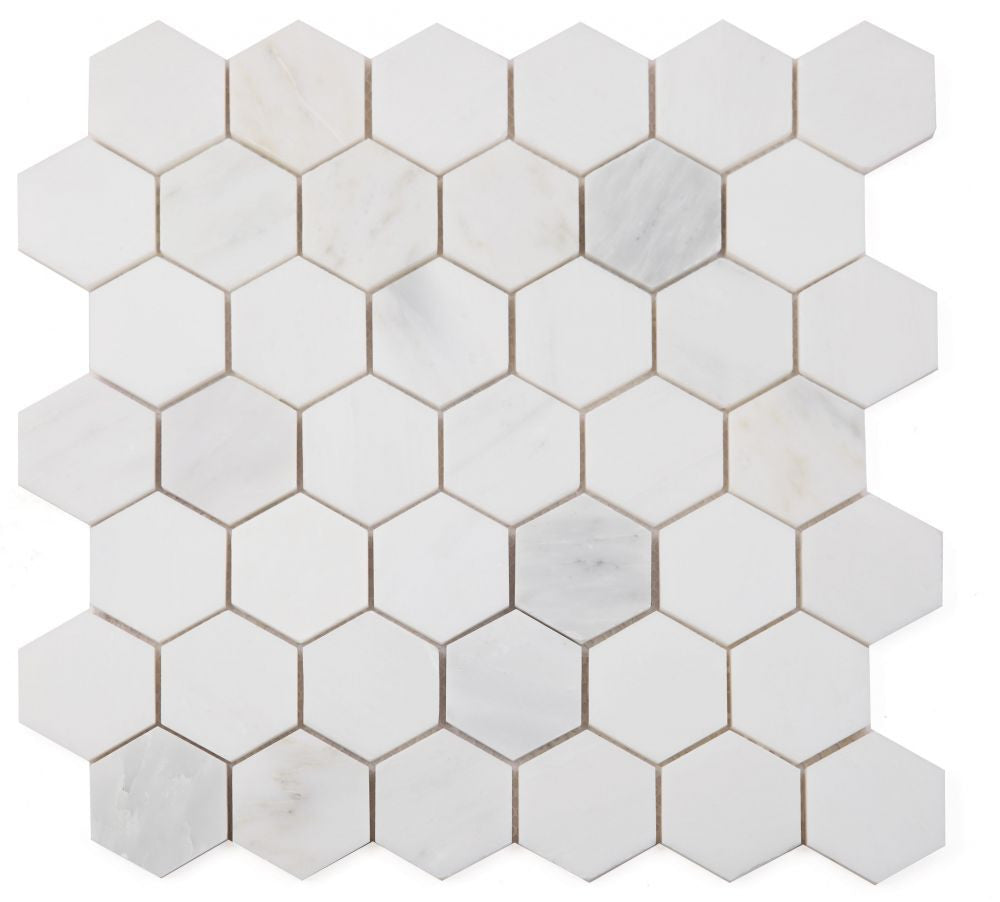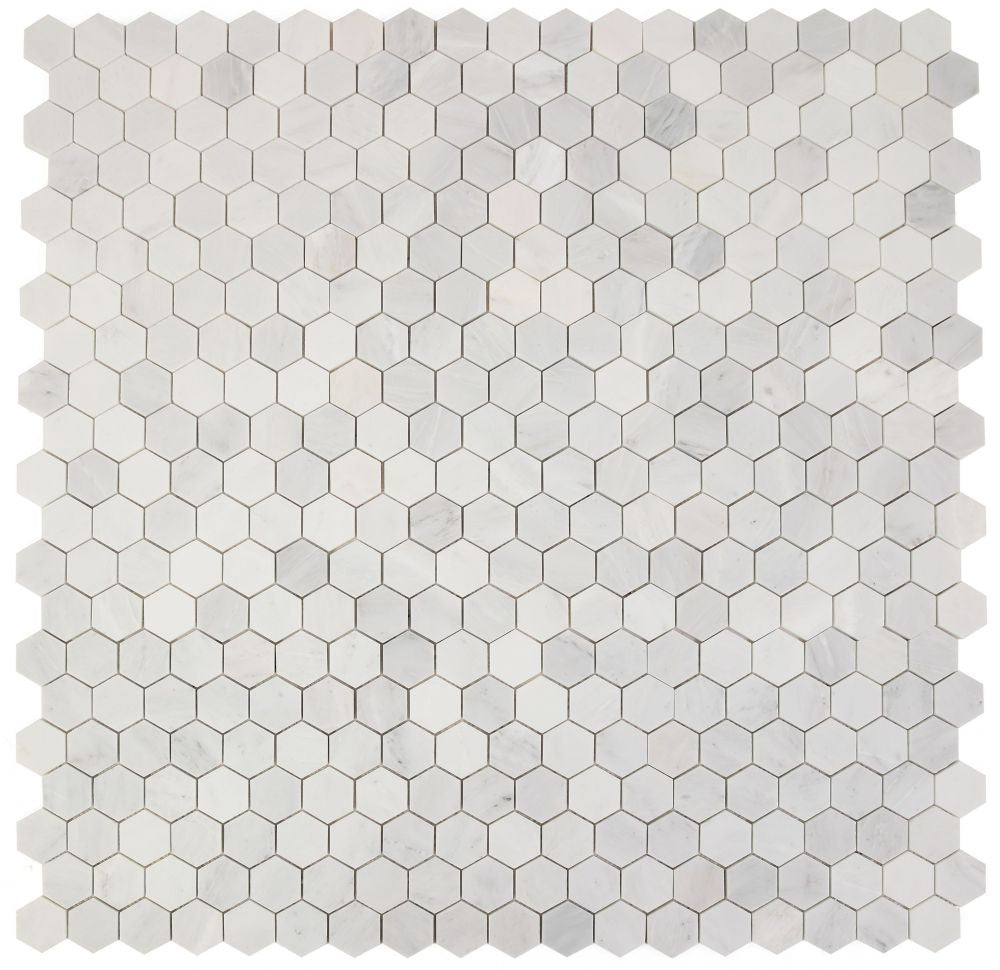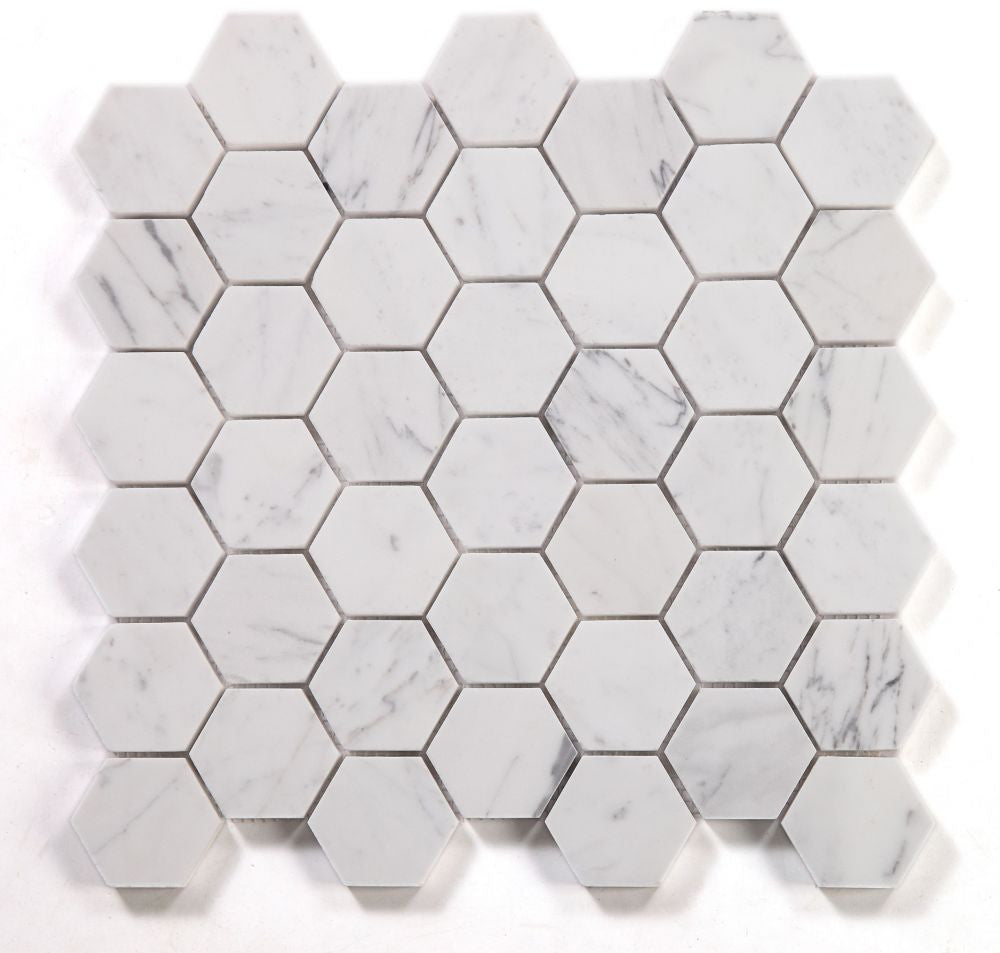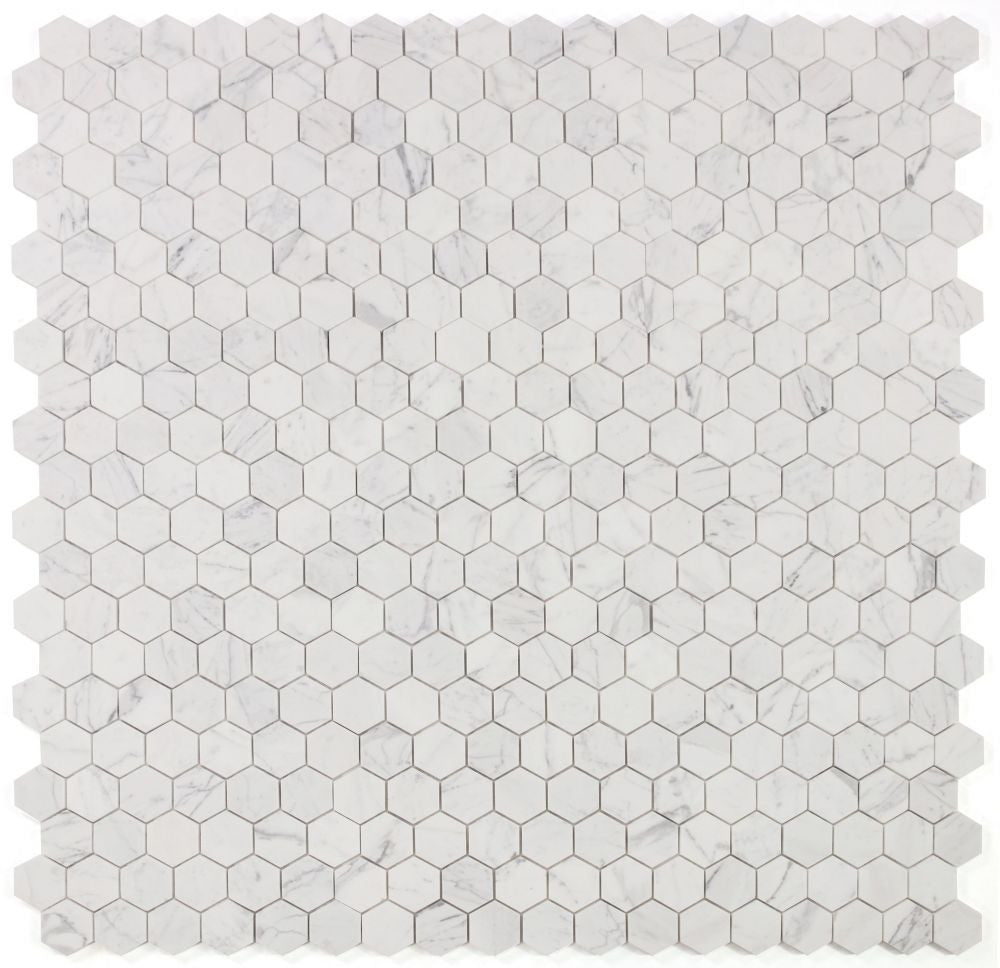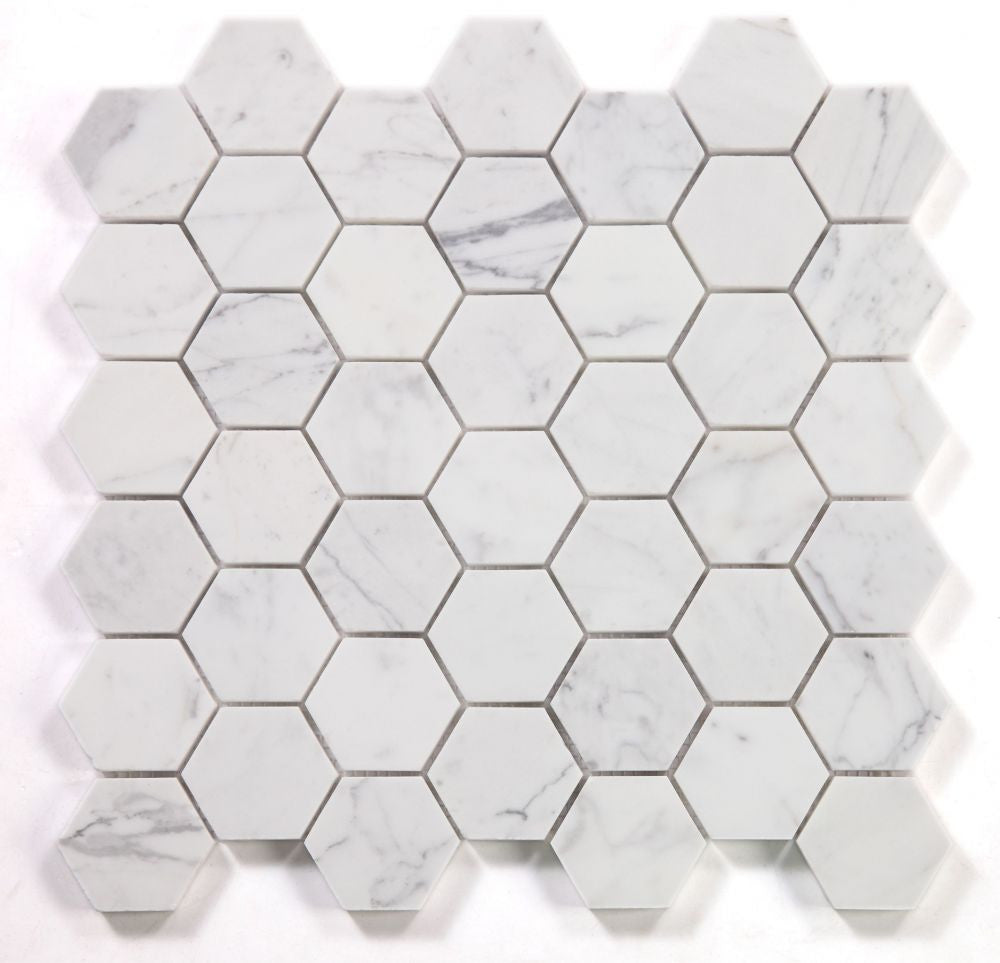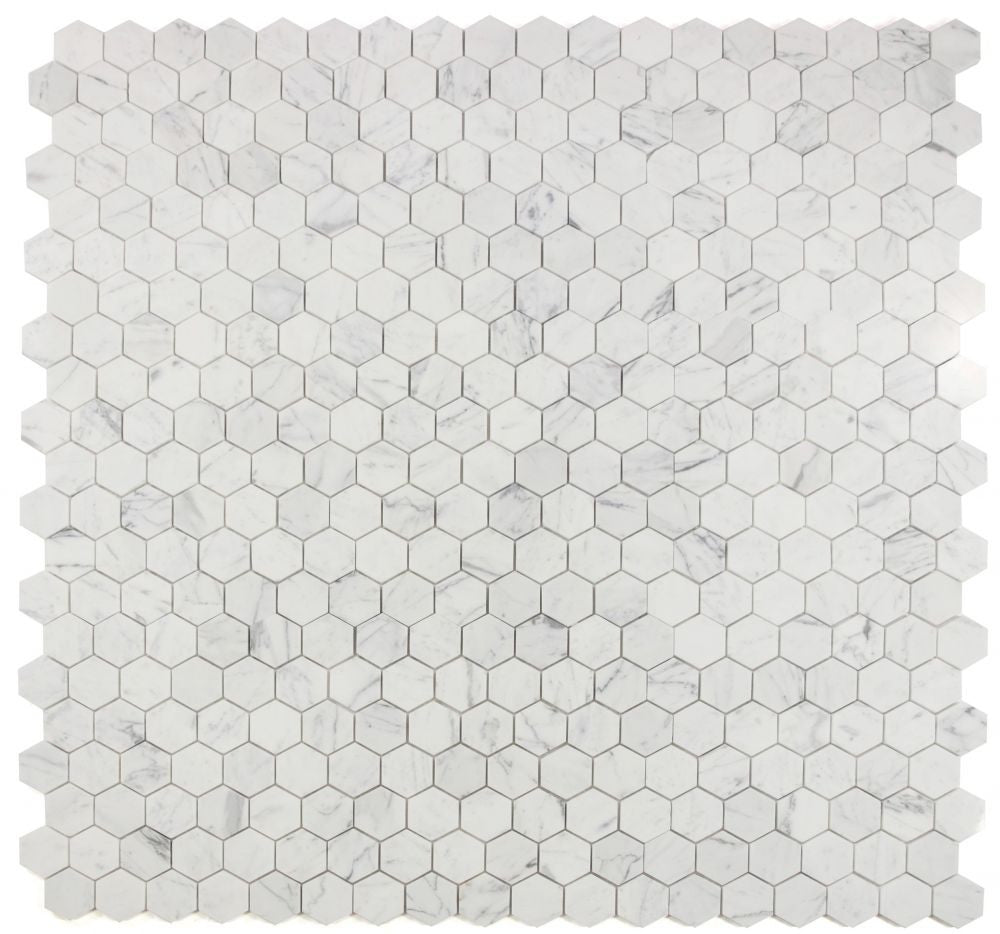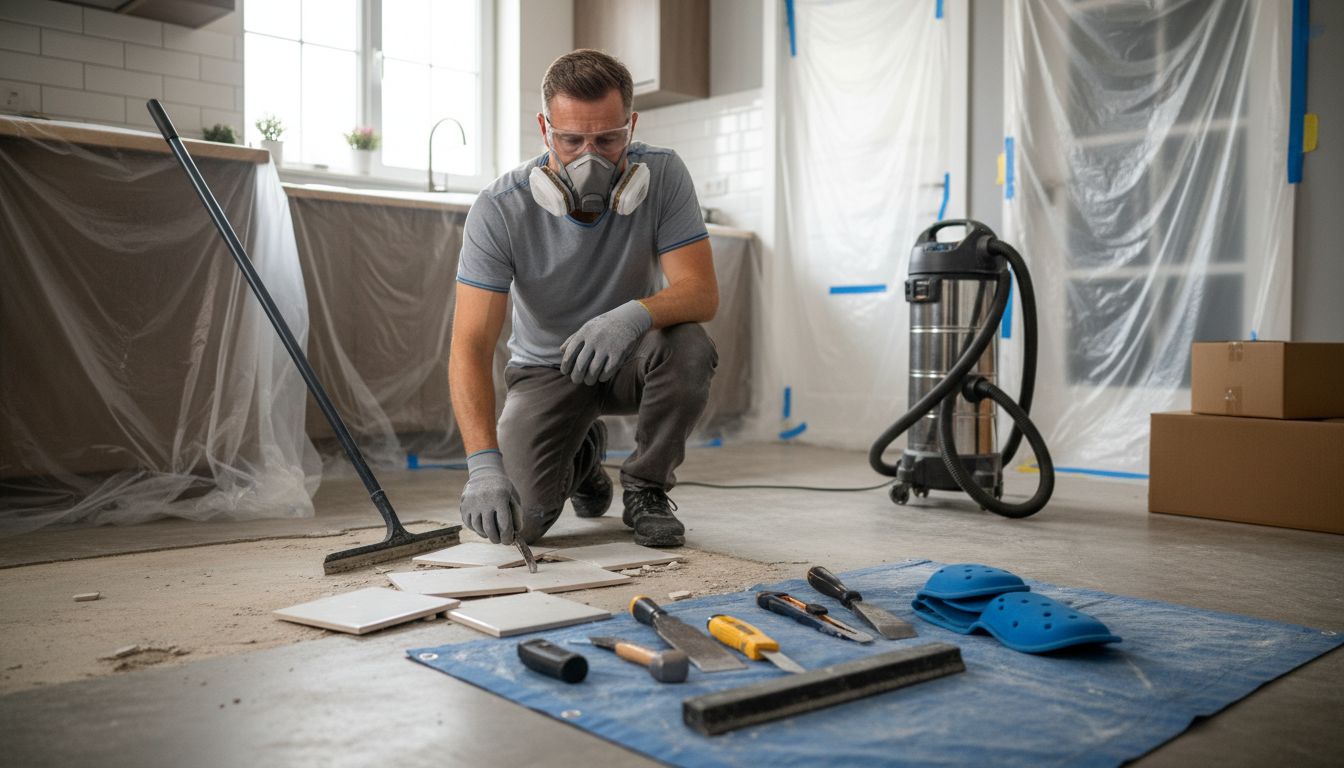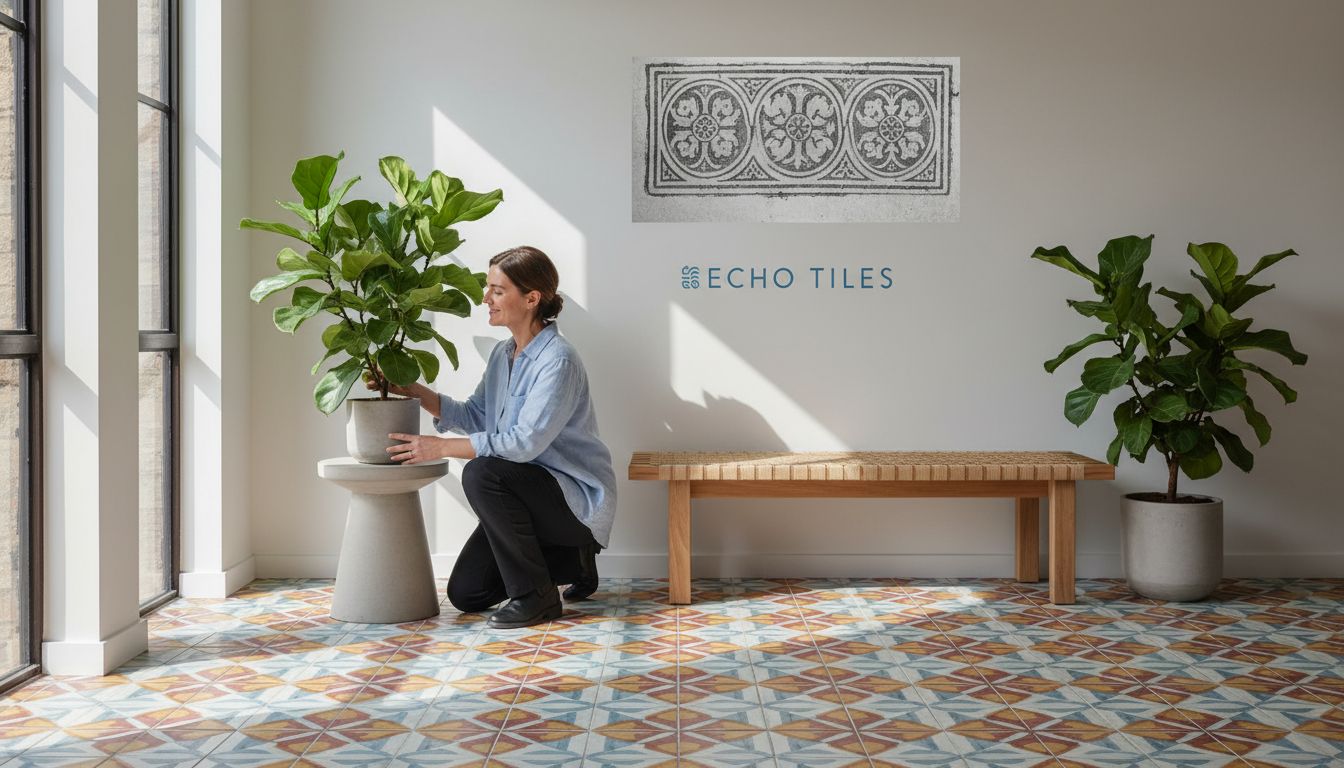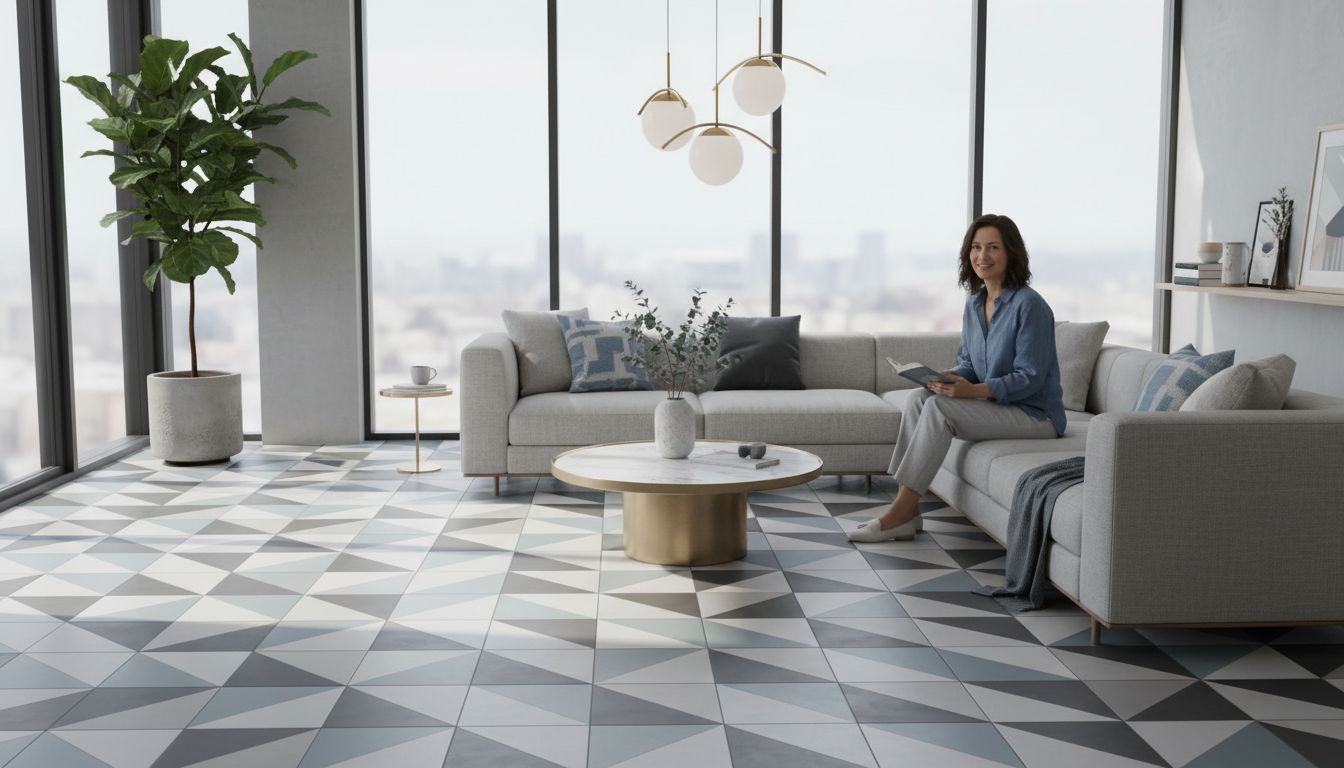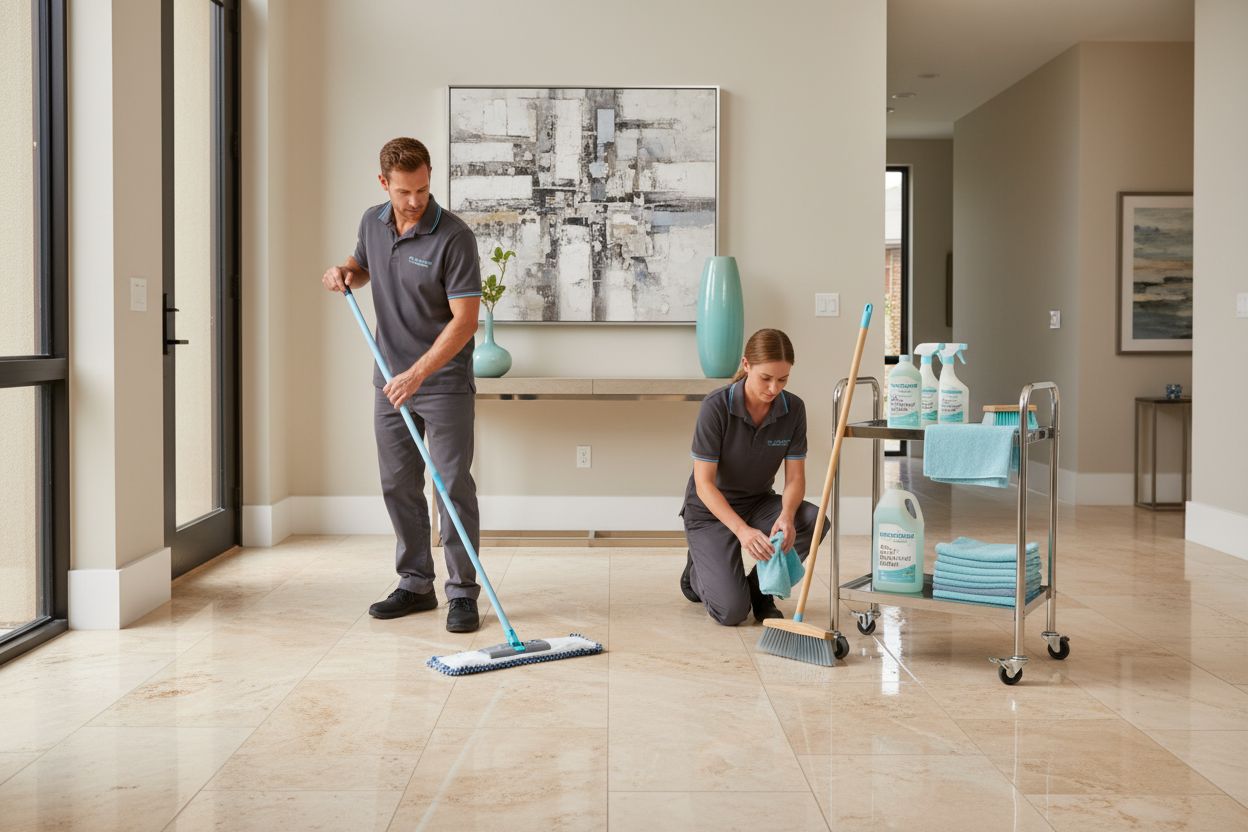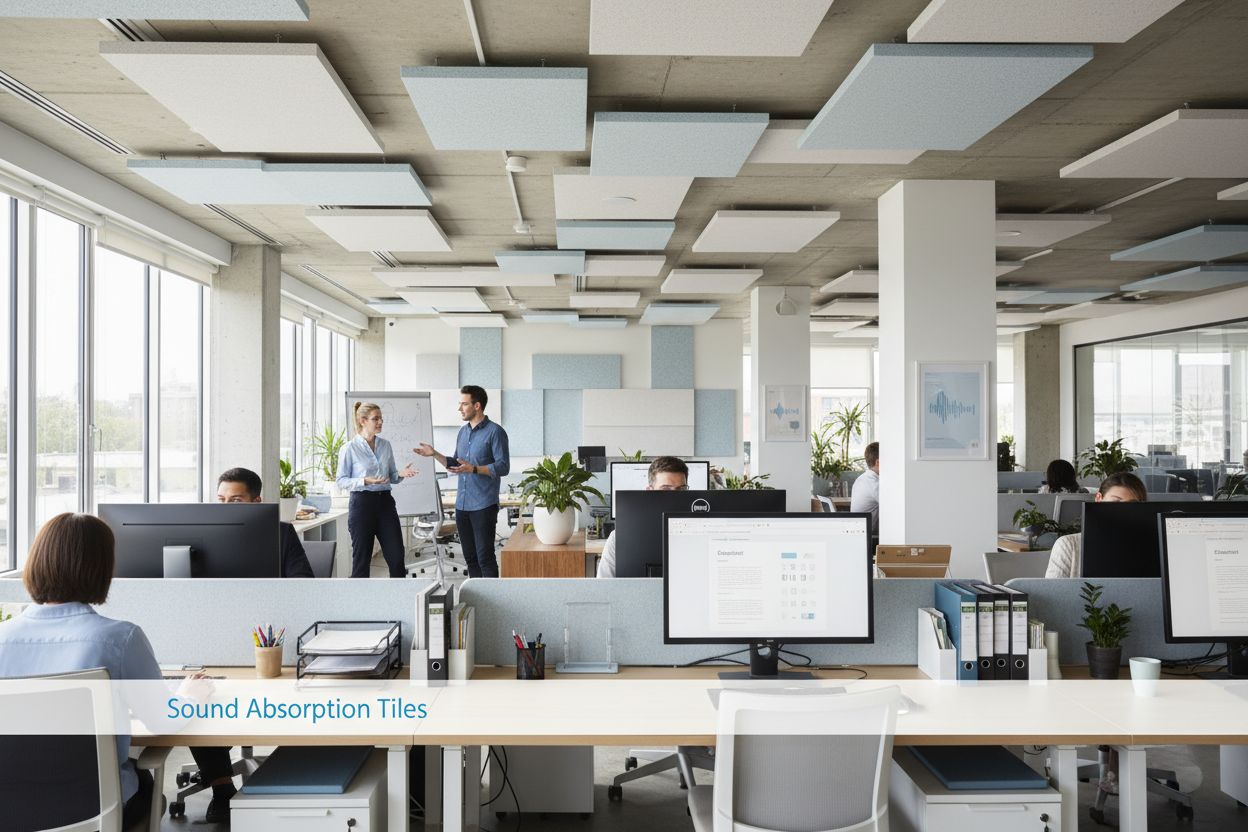Heat resistant tiles are changing how we think about safety and durability in our homes and workspaces. These specialized tiles can survive temperatures of up to 2200 degrees Fahrenheit, a level of heat that would destroy most building materials. Most people expect tiles to be fragile under fire or extreme heat, but the science behind these tiles is all about molecular bonds and crystal structures that keep them strong where others fail.
Table of Contents
- What Are Heat Resistant Tiles And Their Composition?
- Why Heat Resistant Tiles Matter For Homeowners And Builders
- How Heat Resistant Tiles Work: The Science Behind Durability
- Key Concepts Related To Heat Resistant Tiles And Their Applications
Quick Summary
| Takeaway | Explanation |
|---|---|
| Heat resistant tiles withstand high temperatures. | Engineered to handle extreme heat without compromising structural integrity, essential for kitchens and industrial settings. |
| Key materials enhance thermal stability. | Comprised of natural clay minerals and advanced additives, which contribute to their durability against thermal stress. |
| They promote safety and energy efficiency. | Non-combustible properties prevent fire spread and reflect solar energy, lowering indoor cooling needs. |
| Versatile applications across industries. | Ideal for commercial kitchens, labs, and outdoor cooking, providing consistent performance in diverse environments. |
| Informed selection boosts long-term value. | Understanding thermal properties ensures suitable tile choices, reducing maintenance and enhancing property value. |
What Are Heat Resistant Tiles and Their Composition?
Heat resistant tiles are specialized ceramic or porcelain materials engineered to withstand high temperatures without compromising their structural integrity or aesthetic qualities. These unique architectural elements are designed to perform exceptionally in environments exposed to significant thermal stress, making them critical for spaces like kitchen backsplashes, fireplace surrounds, industrial settings, and outdoor cooking areas.
Material Science Behind Heat Resistance
The exceptional thermal performance of heat resistant tiles stems from their fundamental composition and manufacturing processes. Typically crafted from ceramic or porcelain materials, these tiles undergo high-temperature firing at extreme temperatures ranging between 1200 to 2200 degrees Fahrenheit. This intense heating process transforms raw clay materials into a dense, incredibly stable ceramic structure with remarkable heat tolerance.
Key components contributing to heat resistance include:
- Ceramic Base Materials: Primarily composed of natural clay minerals like kaolin, silica, and feldspar
- Mineral Additives: Specific mineral compounds that enhance thermal stability and structural strength
- Manufacturing Techniques: Advanced kiln firing processes that create molecular bonding and reduce material porosity
According to Materials Science and Engineering Research, the molecular structure of ceramic tiles allows them to maintain dimensional stability and resist thermal expansion under extreme heat conditions. This scientific principle ensures that heat resistant tiles can endure repeated temperature fluctuations without cracking, warping, or degrading.
Performance Characteristics and Applications
Beyond their thermal resilience, heat resistant tiles offer multiple performance advantages. They provide excellent thermal insulation, preventing heat transfer and protecting underlying surfaces. Their non combustible nature makes them ideal for areas requiring strict fire safety standards. Learn more about different tile applications in our comprehensive guide on tile types.
Professional architects and designers frequently specify heat resistant tiles for critical areas like:
- Commercial kitchen environments
- Industrial manufacturing zones
- Fireplace and barbecue surrounds
- High temperature laboratory settings
- Outdoor cooking and grilling areas
By understanding the complex material science and engineering behind heat resistant tiles, homeowners and professionals can make informed decisions about selecting the most appropriate tile solutions for their specific thermal performance requirements.
Below is a table summarizing the main characteristics and advantages of heat resistant tiles based on their composition and how these elements contribute to durability.
| Feature / Component | Description | Contribution to Heat Resistance |
|---|---|---|
| Ceramic Base Materials | Natural clay minerals like kaolin, silica, and feldspar | Form dense, stable ceramic structure |
| Mineral Additives | Specific compounds added during manufacturing | Enhance thermal stability and strength |
| High-Temperature Firing | Kiln firing at 1200-2200°F | Improves molecular bonding, reduces porosity |
| Molecular Structure | Tight atomic bonds and crystal lattice formation | Resists thermal expansion and maintains integrity |
| Non-combustible Properties | Materials that do not combust or degrade with heat | Prevent fire spread, protect underlying surfaces |
| Thermal Insulation | Limits heat transfer to adjacent materials | Protects property and lowers cooling costs |
Why Heat Resistant Tiles Matter for Homeowners and Builders
Heat resistant tiles represent far more than a simple design choice for modern construction and renovation projects. They are strategic investments that provide substantial functional benefits across residential and commercial environments, offering protection, performance, and long-term value for property owners and builders.
Safety and Protective Performance
In environments exposed to high temperatures or potential thermal risks, heat resistant tiles serve as critical protective barriers. Their ability to withstand extreme temperatures without degrading makes them essential in spaces like commercial kitchens, industrial settings, fireplaces, and outdoor cooking areas.
Key safety advantages include:
- Fire Resistance: Preventing rapid heat transfer and reducing potential fire spread
- Structural Integrity: Maintaining dimensional stability under thermal stress
- Surface Protection: Guarding underlying materials from heat damage
Energy efficiency research demonstrates that heat resistant tiles can significantly reduce indoor cooling requirements by reflecting solar radiation and providing superior thermal insulation. This translates into tangible energy savings and enhanced building performance.
Economic and Long-Term Value Considerations
Beyond immediate safety benefits, heat resistant tiles offer compelling economic advantages for homeowners and builders. Their durability means reduced maintenance costs and longer replacement intervals compared to traditional materials. Learn more about tile installation costs in our comprehensive guide.
Potential economic benefits include:
- Reduced replacement and repair expenses
- Enhanced property value through premium material selection
- Lower ongoing maintenance requirements
- Improved energy efficiency
Performance Across Diverse Applications
Heat resistant tiles demonstrate remarkable versatility across multiple environments. From residential kitchen backsplashes to industrial manufacturing zones, these specialized materials provide consistent performance. Architects and designers increasingly specify these tiles for projects requiring exceptional thermal management and aesthetic flexibility.
By understanding the comprehensive advantages of heat resistant tiles, property owners can make informed decisions that balance safety, performance, and long-term value in their construction and renovation projects.
How Heat Resistant Tiles Work: The Science Behind Durability
Heat resistant tiles represent a sophisticated engineering solution that combines advanced material science with precise manufacturing techniques. Their exceptional thermal performance emerges from complex molecular interactions and specialized production processes that transform ordinary ceramic materials into extraordinary thermal barriers.
Molecular Structure and Thermal Stability
The fundamental durability of heat resistant tiles originates in their intricate molecular composition. Ceramic materials like porcelain and specialized clay compounds possess unique atomic structures that inherently resist thermal expansion and structural deformation. When subjected to high temperatures, these materials maintain their dimensional integrity through powerful intermolecular bonds.
Key scientific principles governing heat resistance include:
- Atomic Bonding: Strong covalent and ionic connections between molecular structures
- Thermal Expansion Coefficient: Minimal dimensional changes under temperature fluctuations
- Crystal Lattice Stability: Resistance to molecular displacement during heat exposure
Material Science Research confirms that controlled manufacturing processes create a ceramic matrix with extraordinary thermal resilience, enabling tiles to withstand temperatures exceeding 2000 degrees Fahrenheit without compromising structural integrity.
Manufacturing Techniques and Performance Enhancement
Manufacturers employ sophisticated techniques to amplify the natural thermal resistance of ceramic materials. High-temperature kiln firing, precise mineral additives, and advanced pressing methods transform raw materials into engineered thermal barriers. Check out our comprehensive guide on tile surface variations to understand how different manufacturing approaches impact tile performance.
Critical manufacturing strategies include:
- Controlled clay particle alignment
- Precise temperature gradient management
- Specialized mineral composition optimization
- Advanced compression and sintering techniques
Thermal Performance Mechanisms
Heat resistant tiles work through multiple interconnected mechanisms that prevent heat transfer and maintain structural stability. Their dense molecular structure reflects thermal energy, creates insulative air pockets, and dissipates heat across their surface area.
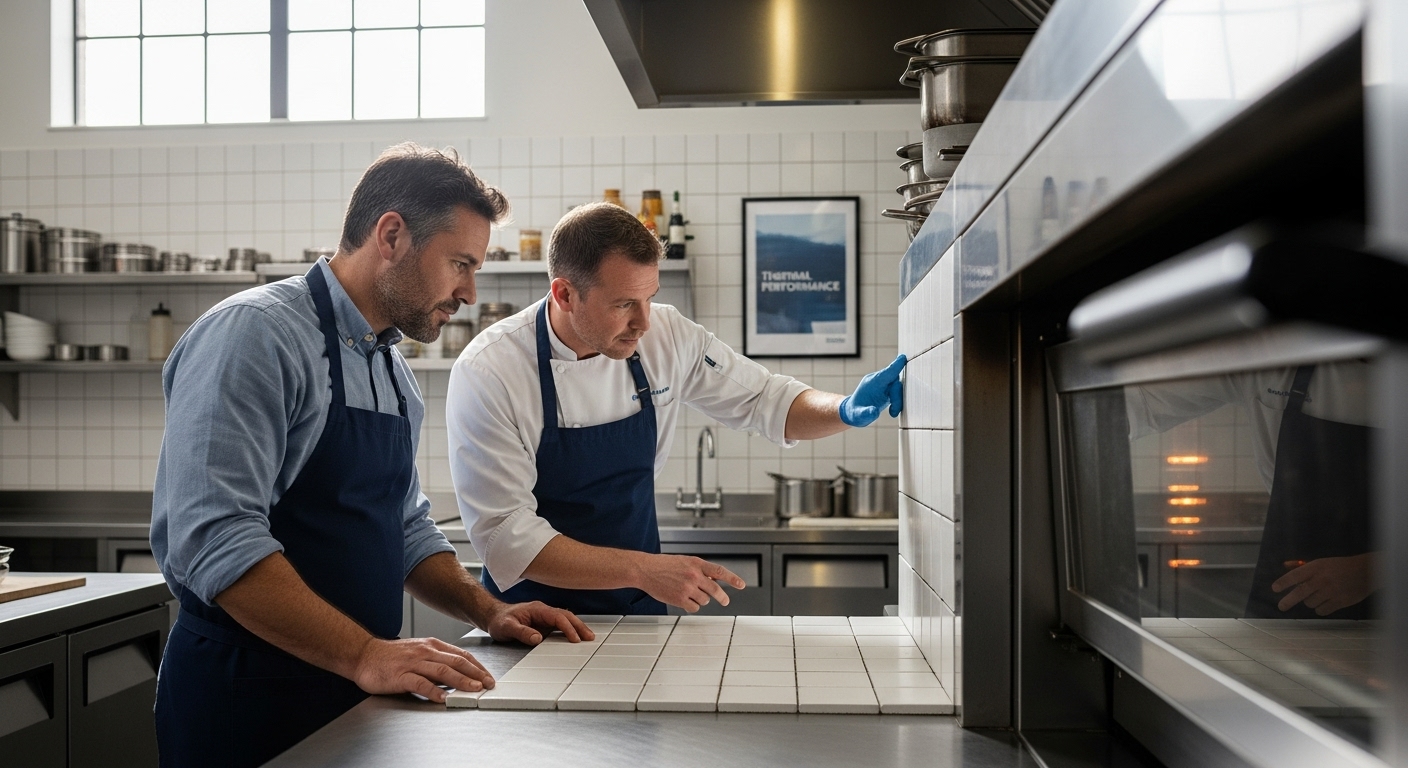 This multifaceted approach ensures consistent performance across diverse environmental conditions.
This multifaceted approach ensures consistent performance across diverse environmental conditions.
By understanding these complex scientific principles, professionals and homeowners can appreciate the remarkable engineering behind heat resistant tiles and make informed material selection decisions for their specific thermal management requirements.
Key Concepts Related to Heat Resistant Tiles and Their Applications
Heat resistant tiles represent a sophisticated technological solution with nuanced performance characteristics that extend far beyond basic architectural materials. Understanding their complex attributes requires a comprehensive exploration of thermal engineering, material science, and strategic application principles.
Temperature Rating and Performance Classifications
Professional selection of heat resistant tiles demands precise understanding of their thermal performance metrics. Different environments require specific temperature tolerance levels, which are systematically categorized through standardized rating systems that evaluate material stability, thermal shock resistance, and long-term durability.
Critical temperature performance categories include:
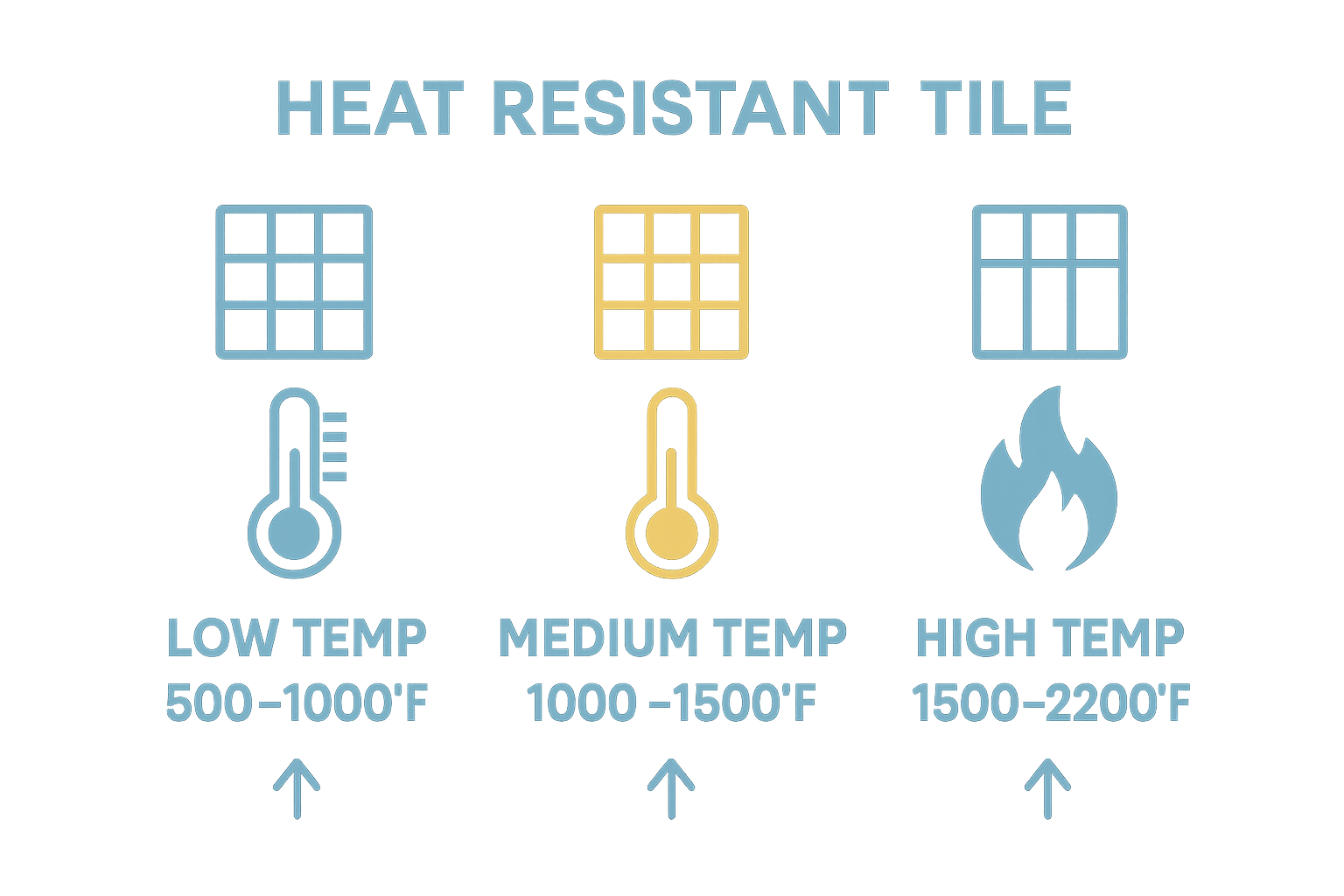
- Low Temperature Range: 500 to 1000 degrees Fahrenheit
- Medium Temperature Range: 1000 to 1500 degrees Fahrenheit
- High Temperature Range: 1500 to 2200 degrees Fahrenheit
Ceramic Engineering Research indicates that these classifications help professionals match specific tile materials with appropriate thermal environments, ensuring optimal performance and longevity.
This table breaks down the primary temperature ranges for heat resistant tiles and the types of environments where each classification is most applicable.
| Temperature Range | Degrees Fahrenheit | Typical Uses in Environments |
|---|---|---|
| Low Temperature | 500 - 1000 | Residential kitchens, light-duty fireplaces |
| Medium Temperature | 1000 - 1500 | Commercial kitchens, outdoor grilling areas |
| High Temperature | 1500 - 2200 | Industrial zones, labs, manufacturing floors |
Material Composition and Thermal Properties
The intricate relationship between material composition and thermal performance determines a heat resistant tile’s ultimate effectiveness. Different ceramic formulations provide varying levels of heat resistance, thermal conductivity, and structural integrity. Explore the differences between tile materials in our comprehensive guide to better understand these nuanced characteristics.
Key material composition factors include:
- Mineral content and molecular structure
- Manufacturing precision
- Ceramic base material selection
- Thermal expansion coefficient
- Compression and sintering techniques
Strategic Application Considerations
Successful implementation of heat resistant tiles requires careful evaluation of environmental conditions, potential thermal challenges, and specific performance requirements. Architects, engineers, and designers must consider multiple variables when selecting appropriate tile solutions for different contexts.
Primary application domains encompass:
- Industrial manufacturing facilities
- Commercial kitchen environments
- High temperature research laboratories
- Aerospace and automotive engineering
- Residential fireplace and outdoor cooking areas
By comprehensively understanding these key concepts, professionals can make informed decisions about heat resistant tile selection, ensuring optimal thermal management and long-term material performance across diverse architectural and industrial applications.
Ready to Upgrade With Heat Resistant Tiles That Actually Perform?
Are you worried about cracked, faded, or unsafe tiles in high-temperature places like your kitchen or around your fireplace? Many homeowners and builders struggle to find stylish tiles that truly withstand heat and protect their spaces for the long haul. You learned why heat resistant tiles matter and how the science of ceramic composition makes all the difference. Now see for yourself how the right choices can safeguard your investment and give you peace of mind.
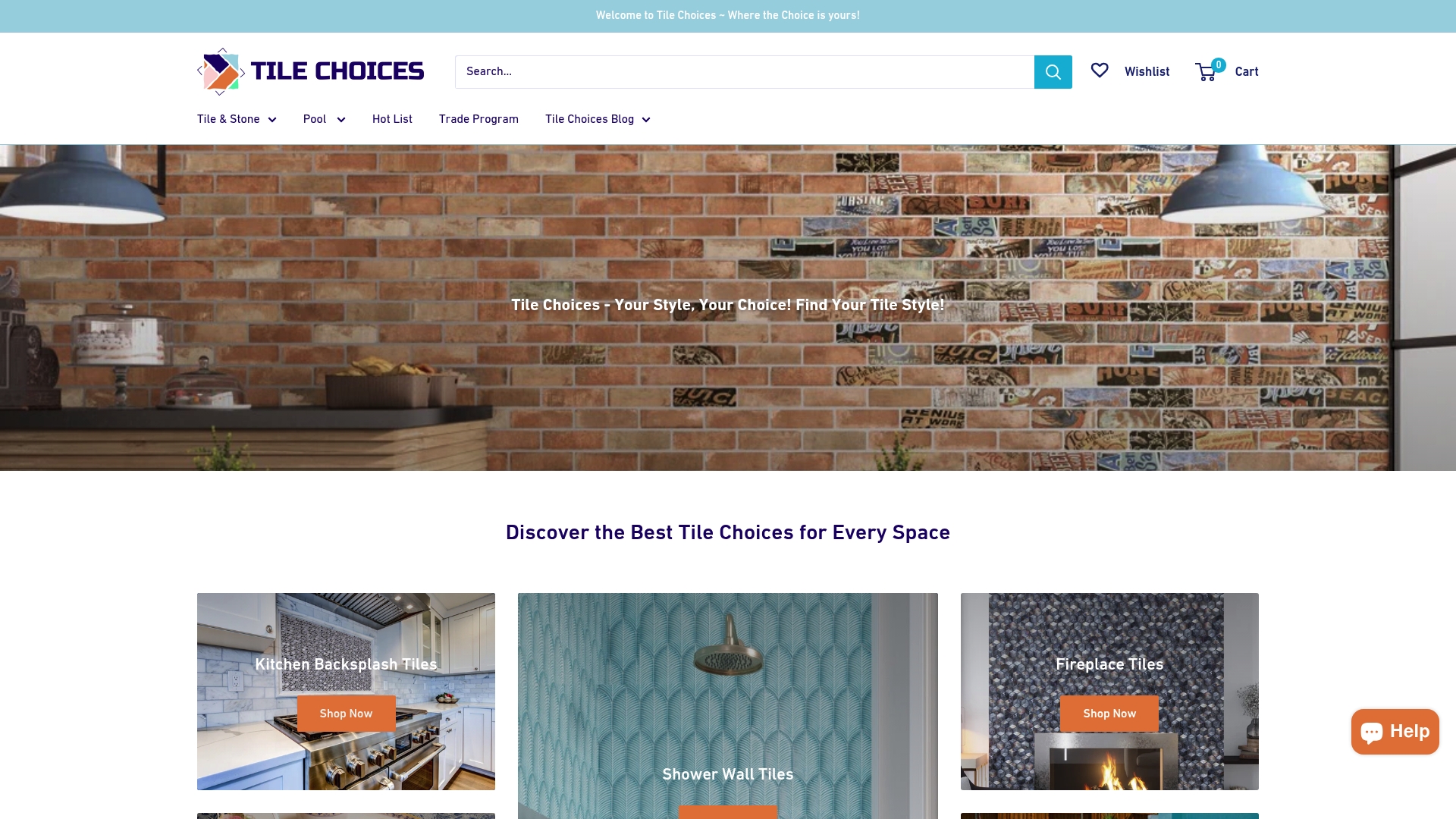
Visit TileChoices.com to browse tiles specially designed for demanding environments. If you want to dive deeper into choosing the right tiles for every surface, discover our expert advice on tile types or learn about real installation costs so you can plan with confidence. Transform your space with tiles that work as hard as you do. Shop now before your next project begins.
Frequently Asked Questions
What are heat resistant tiles made from?
Heat resistant tiles are typically crafted from ceramic or porcelain materials, primarily using natural clay minerals such as kaolin, silica, and feldspar, along with specific mineral additives that enhance their thermal stability and structural strength.
How do heat resistant tiles handle high temperatures?
Heat resistant tiles undergo high-temperature firing processes that transform raw materials into dense, stable structures. They can withstand temperatures exceeding 2000 degrees Fahrenheit and maintain their dimensional integrity without cracking, warping, or degrading under thermal stress.
Where can heat resistant tiles be used effectively?
Heat resistant tiles are ideal for environments exposed to high temperatures, such as commercial kitchens, fireplace surrounds, outdoor cooking areas, industrial manufacturing zones, and high-temperature laboratory settings.
What are the benefits of using heat resistant tiles in construction?
Using heat resistant tiles provides numerous benefits, including fire resistance, structural integrity under thermal stress, surface protection from heat damage, and long-term economic advantages such as reduced maintenance costs and improved energy efficiency.


